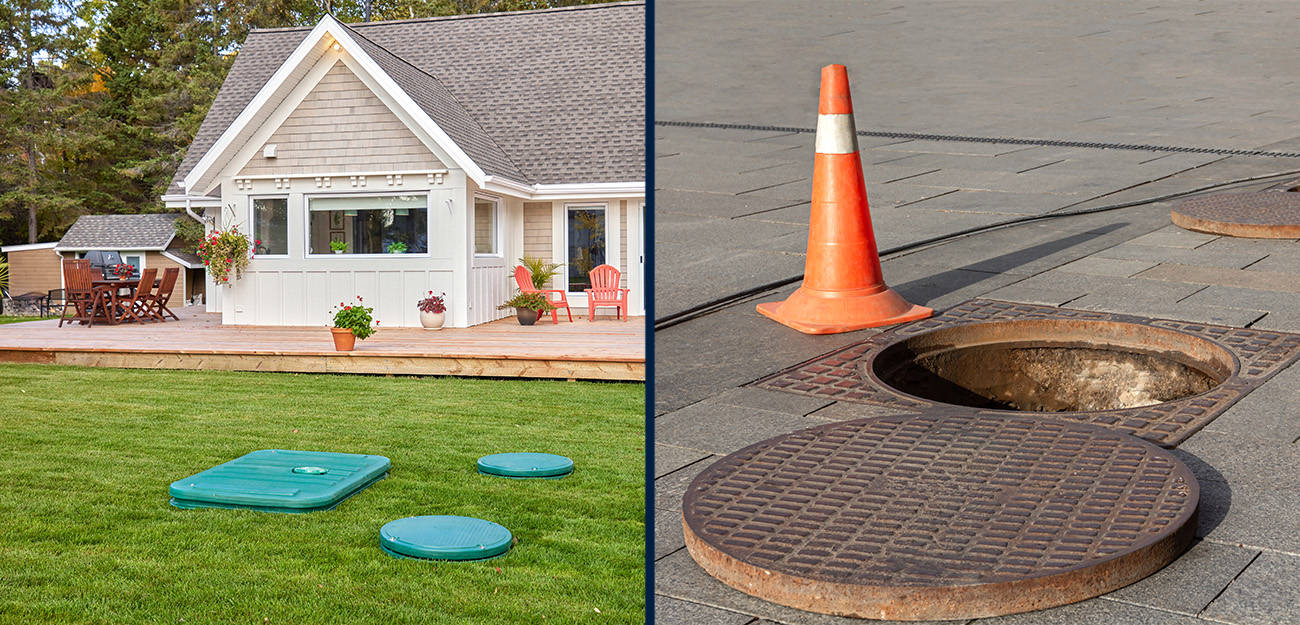Emergency Septic Service: Swift Solutions for Urgent Needs
Wiki Article
Sewage-disposal Tank Providers Unraveled: From Installation to Maintenance-- Your Full Overview
Are you battling to recognize the ins and outs of sewage-disposal tank services? Look no more-- this complete overview will certainly untangle everything for you. From setup to upkeep, we'll walk you via the procedure detailed. Learn about the important equipment needed for correct upkeep and the signs of potential issues to keep an eye out for. And also, we'll also share some convenient do it yourself pointers to maintain your sewage-disposal tank running efficiently. Prepare yourself to end up being a septic container professional!Sewage-disposal Tank Installation Process
When setting up a septic container, you will certainly need to meticulously excavate a hole in the ground. Utilize a backhoe or an excavator to dig an opening that is deep and wide sufficient to accommodate the dimension of your septic container.

After the base is prepared, thoroughly reduced the sewage-disposal tank right into the opening making use of a crane or various other lifting tools. Ensure to position the container correctly according to the design plans and regional regulations. As soon as the storage tank is in area, backfill the hole with soil, making certain to compact it in layers to avoid settling.
Finally, connect the inlet and electrical outlet pipes to the sewage-disposal tank, making certain proper alignment and limited seals. It is necessary to follow neighborhood pipes codes and regulations when connecting the pipelines. septic service.
Necessary Devices for Sewage-disposal Tank Upkeep
One of the most essential items of equipment is a septic tank pump. A septic container therapy item can be made use of to keep the health of the germs in the container. By having these necessary tools, you can make sure the correct maintenance of your septic container and lengthen its lifespan.Normal Septic System Pumping Arrange
To keep the health and wellness and efficiency of your septic tank, it is vital to develop a routine pumping schedule. Routine pumping aids protect against the buildup of strong waste and makes sure the correct performance of your septic system. The frequency at which you need to pump your sewage-disposal tank depends on numerous factors, consisting of the dimension of your tank, the number of people in your household, and your water usage.As a basic guideline, it is recommended to have your septic container pumped every three to five years. However, it is crucial to check your tank's condition on a regular basis and change the pumping routine appropriately. If you observe any type of indications of a full container, such as slow drains, smells, or sewer back-ups, it is necessary to have your tank pumped instantly.
In addition to routine pumping, correct upkeep and care are vital to lengthen the life expectancy of your septic tank. Prevent purging non-biodegradable products, such as diapers, paper towels, or grease, down the tubes. These can clog your system and lead to costly repair services.
Signs of Septic System Issues to Keep An Eye Out For

Do It Yourself Tips for Sewage-disposal Tank Maintenance
Take proactive actions to maintain your septic system by consistently pumping it. This is a critical DIY tip that ensures the proper functioning of your septic tank. Normal pumping aids get rid of built up solids and stops them from blocking the pipes or harming the container. The frequency of pumping relies on the dimension of your container and the variety of individuals in your family. As a basic rule, it is advised to pump your septic storage tank every 3 to 5 years. Nevertheless, if you have a smaller sized storage tank or a larger household, more constant pumping may be needed. Another crucial DIY idea for sewage-disposal tank maintenance is to be mindful of what drops your drains. Stay clear of getting rid of oil, oil, chemicals, and non-biodegradable things right into your septic system. These compounds can disrupt the natural biological process that damages down waste in the tank. In addition, preserve water to avoid overloading the system. Fix any leakages or trickles immediately and consider mounting low-flow fixtures. By following these simple do it yourself suggestions, you can prolong the life-span of your sewage-disposal tank and avoid expensive fixings in the future.

Conclusion
Finally, keeping your septic system is important to stay clear of troubles and ensure its appropriate functioning. Regular pumping, keeping an eye out for signs of concerns, and adhering to DIY suggestions can help you keep your sewage-disposal tank in excellent problem. By understanding the setup process and having the vital tools, you can make sure that your septic system serves you well for several years to come. Keep in mind, correct upkeep is essential to prevent costly repair services and maintain your sewage-disposal tank running efficiently.A septic container therapy item can be used to keep the wellness of the microorganisms in the tank.To preserve the wellness and effectiveness of your septic storage tank, it is necessary to develop a regular pumping schedule. The regularity at which you ought to pump try this your septic container depends on numerous elements, consisting of the dimension of your container, the number of individuals in your household, and your water usage.
If you discover any indicators of a complete tank, such as slow drains, smells, or sewer backups, it is important to have your tank pumped immediately. - septic service
Regular pumping, viewing out for indicators of concerns, and complying with Do it yourself pointers can assist you keep your septic container in good condition.
Report this wiki page